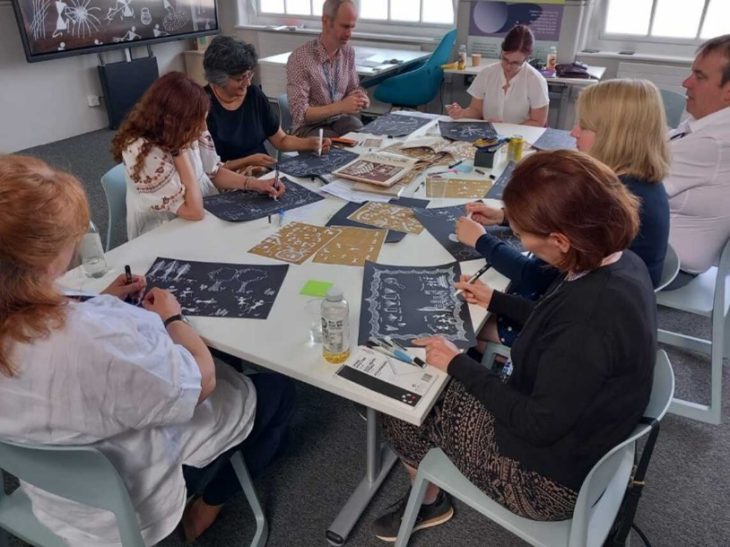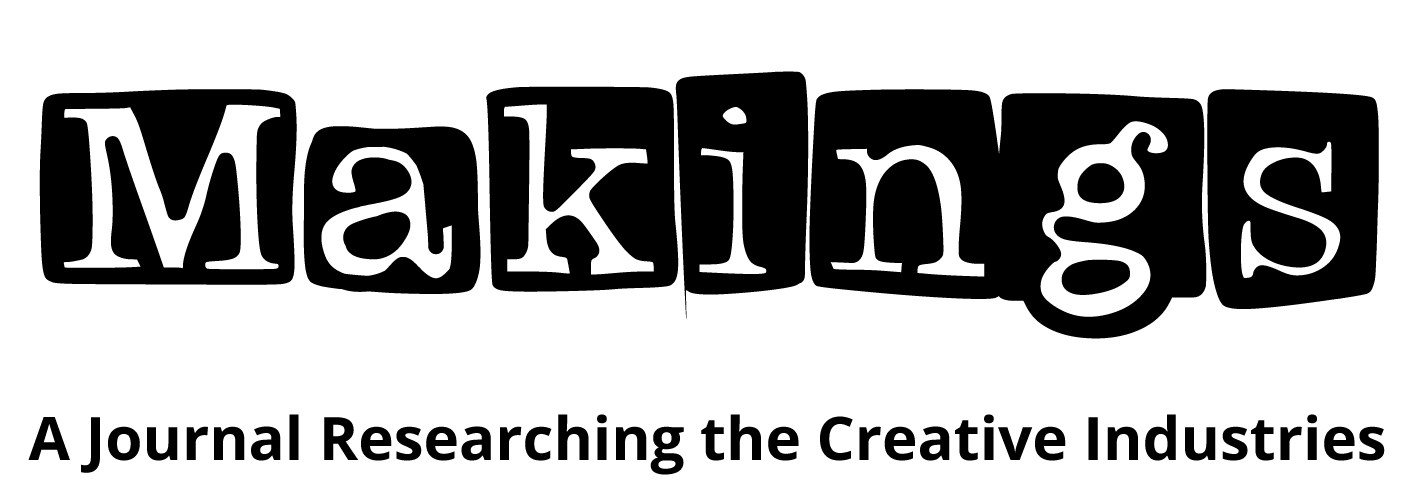
Postcards of Promise: Using Postcards to Connect Local Government Officers and Creative Practitioners | Blog
Dan Ashton, Aiysha Jahan, Will May
Diverse Capacities research team
University of Southampton, Southampton Institute for Arts and Humanities
Artists help shape our places: councils serve the people that make them. How can we better build and sustain relationships and build understanding between these very different communities? This blog post focuses on one engagement strategy used by our research team for an ongoing AHRC-funded project based at the University of Southampton, Diverse Capacities.
Our project aimed to connect different cultural stakeholders in the Solent area, including freelance artists with local government officers with a culture remit. Pre-project engagement with these groups had shown low levels of mutual understanding, and sometimes points of friction.
Before any face-to-face meetings between these two groups of stakeholders, we wanted to initiate interaction between them in more unexpected ways. Existing research and policy guidance highlights the need for ‘innovative and original approaches’ to engage communities in conversations about culture (LGA, 2020: 10). We choose postcards, noting their success in empowering local communities in projects designed by Marion Lean and the Doing Data Differently team.
Why postcards? Many of our project participants lived in areas with significant tourist economies, and postcards were a chance to speak back to the ways their places were marketed vs. the year-round experiences for communities who lived there. We invited participants to use art practices reflecting a range of communities from their areas, including Warli art, a South Asian art form which records narratives, beliefs, and customs using triangle, circle, and square patterns. Existing research has shown how the coastal tourist economies of the UK often silence racial difference, and many of the districts our LGOs represented had significant South Asian communities who were underserved in the current culture offer.
In the first session, LGOs created their own postcards, drawing representations of their communities and the intricate networks within them. Creating postcards which represented themselves and their networks was an effective way of telling their story and humanising them as individuals rather than simply as representatives of local government. As our workshops with freelancers were scheduled between sessions with LGOs, postcards were a creative and engaging way to begin a dialogue between the two groups that could continue afterwards via email, creative collaboration, and finally face-to-face meetings.
When the postcards were shared with the eight creative freelancers involved in the project, they were surprised by images the LGOs had created and intrigued by what they represented. They asked about the people and places behind these images and this was a productive way into a conversation about the role that local government can play in supporting creative practitioners who work in the area. While the drawings often sparked connection, in some instances the images LGOs had chosen to represent their regions raised more complicated responses. Did local government want to create a more connected, creative place, or to increase tourist footfall?
The LGOs were keen to support creative freelancers in their region and asked many questions through the postcards that they felt would help them support creative freelancers better. Here we highlight four key questions LGOs asked freelancers and share an overview of the freelancers’ responses.
How can local government support creative freelancers in their area?
The freelancers questioned the visibility of existing local government support for the creative industries, and outlined three key areas for support. They identified training needs around self-employment, from completing tax self-assessments or securing business insurance to invoicing. Some were also interested in training that would help them manage people and processes more effectively.
They felt that a process of consultation through which local government could understand their needs better would result in much more effective support for all freelancers in the region. Some freelancers also highlighted the power dynamic between LGOs and self-employed individuals who relied on any opportunities being sent their way. They wanted LGOs to recognise this position of power: enablers can also be gatekeepers.
What deters freelancers from working with local government?
Generally, freelancers felt that opportunities were either poorly signposted or difficult to access due to complex procedures such as tendering. Access to opportunities was also impacted by the way they were shared and advertised, with many freelancers being uncertain where they could look for opportunities to work with local government. Some freelancers who had worked with their local government before discussed that when opportunities were not run well or expectations were unrealistic and did not match the renumeration offered, the work was not worthwhile. Delays in payment or invoice-processing also deterred them.
How can we work better with you?
There was a lively discussion about ways in which opportunities could be tailored to help them work well with local government. While it was acknowledged that LGOs were constrained by the processes that their organisations required, such as tendering for projects, there are ways in which the process can be made easier. Complex stages and their requirements could be streamlined and scaffolded for easier understanding. Freelancers again felt that the best way that LGOs can work better with them is through a consultation process through which each group learns the limitations and needs of the other. Freelancers wanted to understand the limitations that LGOs worked while also discussing their own often-precarious work lives. They hoped that this may encourage LGOs to give pay closer consideration when developing opportunities through funding applications and other ways. They imagined the ideal scenario: working together with LGOs to co-design opportunities that would benefit both groups and enrich communities. They hoped that by building and nurturing relationships between local government and those in the creative industry, the two groups could develop and work on mutually beneficial projects that their local communities could enjoy.
How can we help you navigate complex systems?
As the freelancers highlighted, local government opportunities often don’t feel accessible, if they are visible at all. To understand complicated processes, such as tendering ‘how-to’ guides or sample project roadmaps could be created by LGOs, accessible on an easy-to-navigate website dedicated to creative industry working.
Council websites needed named point-of-contact or at least the LGO with a creative industries remit should be searchable on the local government website and their contact details made freely available. Opportunities to work with local government can also be shared via a mailing list and on the website.
These questions and their enthusiastic and detailed responses highlight the need for better communication between stakeholders in the creative industry and just how much can be achieved through open and sustained engagement. It also suggested the benefits of using unexpected methods of communication: postcards broke through the previous experiences the creative practitioners had often with complex online invoice systems.
We were happy to see that for the next phase of the project, where freelancers undertook creative commissions, many participants reached out to their local government officers to involve them directly in creating their artworks. We look forward to seeing the results.








